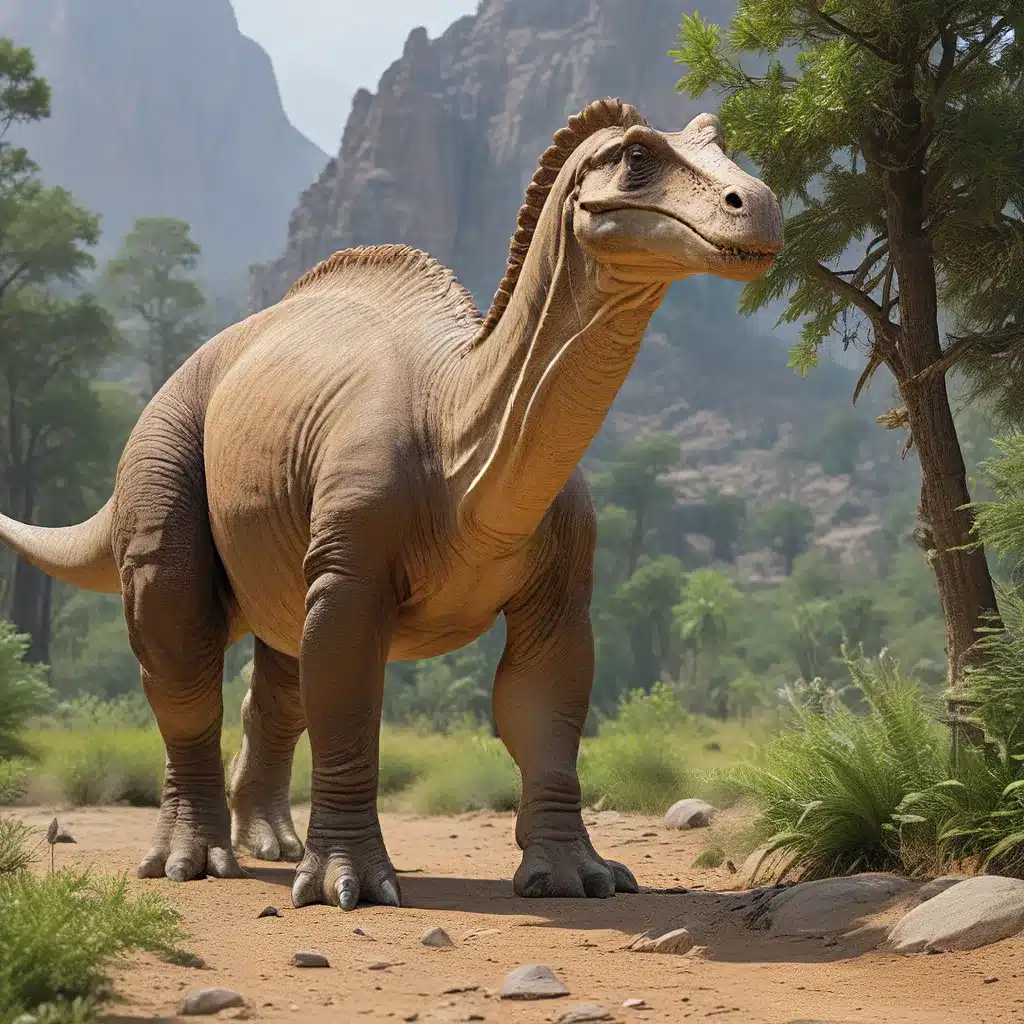
The Enigmatic Necks of Long-Necked Dinosaurs
For centuries, the elongated necks of sauropodomorph dinosaurs have captivated the imaginations of scientists and enthusiasts alike. These massive, long-necked creatures, often referred to as the “long-necks,” possessed a unique anatomical feature that has long puzzled paleontologists and evolutionary biologists. Unlike their modern counterparts, the giraffes, sauropodomorphs had an astounding number of neck vertebrae, some reaching lengths of up to 48 feet.
The 1809 speculations of French naturalist Jean Baptiste Lamarck and the later evolutionary theories of Charles Darwin offered potential explanations for the development of long necks in giraffes. However, the fossil record has yet to reveal any evidence of “transitional giraffe necks,” leaving the origin of these remarkable appendages a mystery.
Unraveling the Secrets of Sauropodomorph Necks
A recent study published in the scientific journal PeerJ has shed new light on the evolutionary secrets of sauropodomorph necks. The researchers delved into the intricate design of these long-necked dinosaurs, uncovering a remarkable set of features that facilitated their impressive neck sizes.
One of the key findings was the presence of at least 10 elongated neck vertebrae in sauropodomorphs, a stark contrast to the typical 7 neck vertebrae found in most mammals, including the giraffe. This difference in vertebral count is a testament to the unique evolutionary path of these ancient reptiles.
Furthermore, the researchers identified seven special characteristics that enabled sauropodomorphs to support and function with their extraordinarily long necks:
- Large body size: A substantial body size provided the necessary structural foundation to support the immense weight of the long neck.
- Quadrupedal stance: The stable, four-legged stance of sauropodomorphs helped distribute the load and prevent the animal from toppling over.
- Small heads: The relatively small heads of these dinosaurs reduced the overall weight and muscle power required to lift and control the neck.
- Ten or more neck vertebrae: The increased number of vertebrae allowed for greater flexibility and range of motion.
- Elongated neck vertebrae: The individual vertebrae were significantly longer, contributing to the overall neck length.
- Air-sac breathing system: A unidirectional air-sac system, similar to that of modern birds, improved respiratory efficiency and eliminated the “dead space” associated with the back-and-forth breathing of mammals.
- Pneumatic vertebrae: The vertebrae of sauropodomorphs were designed with numerous air pockets, or pneumaticity, which significantly reduced their overall weight.
According to the Institute for Creation Research, this combination of features was essential for the survival and thriving of these long-necked dinosaurs. The absence of even one of these characteristics would have likely led to the collapse and failure of the sauropodomorph species.
The Evolutionary Implications of Sauropodomorph Necks
The findings from the PeerJ study have significant implications for our understanding of sauropodomorph evolution. The researchers concluded that the long necks of these dinosaurs were not the result of a gradual, step-by-step evolutionary process, as suggested by the theories of Lamarck and Darwin.
Instead, the seven key features identified as necessary for the functionality and survival of sauropodomorphs with long necks point to a more abrupt and fully-formed appearance of these remarkable creatures. The authors suggest that the simultaneous development of this unique set of characteristics makes the existence of any intermediate or transitional forms highly improbable.
This challenges the conventional evolutionary narrative and raises intriguing questions about the origins of sauropodomorphs. The Institute for Creation Research has posited the idea that these long-necked dinosaurs, along with other creatures like humans and giraffes, were created by an all-encompassing plan on the sixth day of the creation week, as described in the biblical account.
Extending the Mysteries of Sauropodomorph Anatomy
The unique adaptations of sauropodomorphs extend even further than their remarkable necks. Recent research published in the journal PLOS One has uncovered additional insights into the skeletal structure of these ancient giants.
The study found that gigantism in dinosaurs, including sauropodomorphs, was achieved through a distinct mechanism compared to that of modern mammals. Rather than thinning of the cartilage between the leg bones as they grow larger, as observed in mammals, the researchers discovered a thickening of the cartilage in dinosaur limb bones.
This thickening is believed to have provided better cushioning and shock absorption, as well as reduced joint friction, allowing these massive creatures to support their immense sizes. The study, published on the official website of the United States government, further underscores the unique and complex adaptations of sauropodomorphs and other dinosaurs.
Conclusion: Unlocking the Secrets of the Ancients
The evolutionary secrets of the sauropodomorphs continue to captivate the scientific community and intrigue the public. The remarkable features that enabled these long-necked dinosaurs to thrive, from their intricate neck anatomy to their specialized skeletal structure, point to a level of complexity that challenges conventional evolutionary theories.
As Phys.org reports, the study of sauropodomorphs and other ancient creatures has the potential to unlock a deeper understanding of the evolutionary history and the origins of life on our planet. By exploring the mysteries of the past, we may uncover clues that shed light on the future of our own existence and the broader story of life on Earth.
Through continued research and exploration, the scientific community and history enthusiasts alike can work to unravel the enigmas that have long surrounded the sauropodomorphs and other fascinating ancient civilizations. By delving into the past, we can better understand the present and shape the future of our understanding of the natural world.


